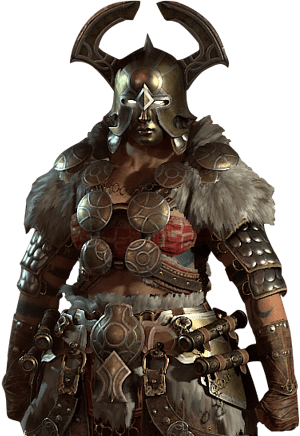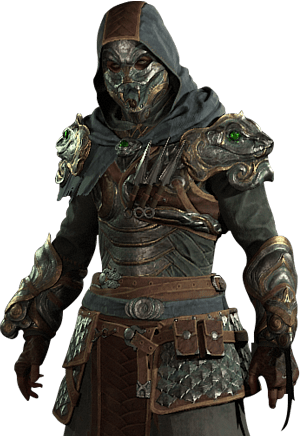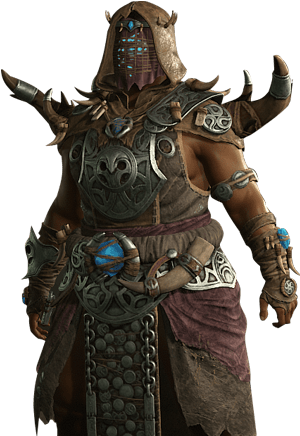New Player Help for Diablo 4 offers a range of valuable information to assist newcomers in comprehending the fundamental mechanics of the game, along with providing recommendations on essential preparations to undertake prior to embarking on their journey in the game. As a newbie or a returning player to the series, it is a must to explore this page to properly grasp the basic mechanics of the latest Diablo 4 and survive its perilous world and ultimately save time as you enjoy continuous progress. From the newbies' perspective, there is quite a lot of information to go through and it can be overwhelming when starting the game. We designed this comprehensive guide as user-friendly as possible and the topics range from general tips and tricks, class introduction, enemy types, and basic exploration. We start with general tips and tricks, that are very useful in the early game even after reaching the end game. Click here to jump to the New Player Help Guide for Diablo 4.
Changing the World Difficulty in Diablo 4
In Diablo 4, one important decision you'll need to make is the difficulty mode you prefer. You can choose between World Tier 1 or World Tier 2. If you're new to Diablo and have no prior experience, starting with Tier 1 is likely the better option. In Tier 1, enemies are less aggressive, intelligent, and durable, allowing you to defeat them more quickly. Despite this, you can still earn a similar amount of experience and gold compared to Tier 2. Tier 1 is also recommended if you want to efficiently reach the endgame without significant changes to the loot you'll acquire in either tier. On the other hand, Tier 2 offers extra experience and gold, but it comes with tougher enemies that may pose a greater challenge.
How To Get Mounts in Diablo 4?
During the early stages of the campaign in Diablo 4, you will visit the city of Kyovashad. While exploring the city, you will encounter a stable master who presents a quest named Donan's Favor. Here's the catch: even though the quest becomes available at this point, you won't be able to complete it until you reach Act 4. To acquire a mount in Diablo 4, you must progress further until the beginning of Act 4, where you will receive a main quest called A Master's Touch. This quest requires you to speak with Donan at the Cathedral of Light in Kyovashad. After conversing with Donan, return to the stable master, who will then provide you with the Old Nell Steed for usage. Additionally, you will have the option to purchase two other mounts, namely the Grey Steed and Mottled Steed, each costing 20,000 gold.
Diablo 4 is an Open World Game
In Diablo 4, you have the opportunity to explore an open world filled with numerous dungeons. What sets Diablo 4 apart from previous games in the series is its seamless open-world design. When transitioning from one area to another, you won't encounter any loading screens, enhancing the immersive experience. Whether you choose to venture alone or with a party, Diablo 4's world maintains the captivating desolation that the series is revered for. You can opt to embark on solo adventures or gather a party of up to four individuals, and each member will receive their own distinct loot.
Engage in Objectives for Experience & Loot
During your exploration of the zones, you will encounter spontaneous side events and campaign quests that present opportunities for experience and valuable loot. Completing these tasks proves to be a significant means of advancing your character's progression. These activities serve as an excellent source of experience points, in addition to the rewards gained from Dungeon runs. When you feel overwhelmed by manual grinding, partaking in these objectives provides a refreshing and enjoyable alternative.
Encounter the Mighty World Bosses
World bosses are formidable adversaries of significant size, necessitating the collaboration of a group of players to overcome. Scattered across the open world, these imposing bosses await discovery as you explore the diverse zones of the game. When a world boss materializes, a notification promptly alerts players, enabling them to converge with fellow adventurers in the vicinity, pooling their collective strength to confront the formidable challenge. These encounters demand considerable skill, coordination, and strategic prowess to emerge victorious.
Engage in Legion Gatherings
Gathering Legions represent large assemblages of monsters that materialize within the open world. Players have the opportunity to join these events and vanquish the hordes of creatures, reaping the rewards bestowed upon success. Engaging in these events grants experience, loot, and valuable crafting materials. Typically characterized by waves of enemies, these engagements can be tackled either individually or alongside a group of players, offering a choice in approach and play style.
Focus on the Main Campaign
The campaign structure in Diablo 4 deviates from linearity. Following the conclusion of a brief prologue and arrival at the initial major city, you gain the freedom to explore and advance through the campaign in any direction you desire. Numerous paths unfold before you, granting the flexibility to tackle the campaign in a preferred order. As you progress, both the mobs and zones scale in level alongside your character, ensuring a balanced and challenging experience. Moreover, the rewards you earn also adapt accordingly, evolving alongside your journey through the campaign. It is worth noting that it is also advisable to do Side Quests as well which help you improve the other aspects of the game. Juggling between Main Campaign and Side Quests, in general, may provide you great results in the long run as well.
Periodically Do Side Quests
Engaging in side quests in Diablo 4 proves to be highly advantageous as they offer valuable rewards. By completing these quests, you not only earn experience but also receive gold caches containing crafting materials or elixirs. Most significantly, each side quest grants Renown, which functions akin to region reputation points. Accumulating Renown becomes essential for obtaining skill points, potion charges, and Paragon points. With over twenty side quests available per zone, these quests typically range from brief tasks lasting mere seconds to more involved endeavors that may take upwards of fifteen minutes to complete.
Complete Dungeons for Rewards
Dungeons remain an integral aspect of the Diablo series, and Diablo 4 continues this tradition. Each zone in the game is home to a staggering number of over twenty dungeons, resulting in a grand total of more than a hundred dungeons throughout the game. Engaging in these dungeons yields various rewards, including experience, gold, and item drops. Additionally, completing dungeons grants you renowned and legendary aspects for your Codex of Power. The Codex of Power serves as a comprehensive catalog of legendary aspects or effects that can be applied to your gear, enhancing its power and capabilities.
Liberate Strongholds
In Diablo 4, Strongholds are PVE capture points that offer substantial rewards, including a significant amount of Renown, totaling fifty in all. Completing these Stronghold missions not only grants experience but can also provide access to dungeons and waypoints on occasion. Once you successfully accomplish a stronghold mission, it permanently unlocks along with additional features like vendors and Artisans. In some instances, capturing strongholds will open up convenient shortcuts and pathways that connect different regions. Strongholds can be conquered alone or with a group, and each stronghold is a separate space. While inside a stronghold, you won't see other players unless they are at your party. However, once a stronghold is successfully captured, you'll be able to see and interact with other players who have also triumphed over that stronghold.
Unlock Altars of Lilith
In Diablo 4, there are special statues called Altars of Lilith that give permanent boosts to your characters' stats. These statues are spread out across the game's map, so you have to find them. They also increase the maximum number of Murmuring Obols you can carry. At first, the stat increases might seem small, but if you discover all the Altars of Lilith in a specific region, like Fractured Peaks, you'll see significant improvements. To make finding the statues easier, you can use our Diablo 4 Interactive Map, which shows the exact locations of each statue in every region. Some statues are easy to find while exploring, but others are hidden in remote areas and require thorough searching. It's important to know that the attribute bonuses and increased Obol capacity from the Altars apply to all your characters. However, the locations of the statues are not shared, so you can't see which ones you've found on previous characters. To avoid repetition, it's a good idea to try and find all the statues with one character so you don't have to do it again.
Clear The Lost Archives Dungeon
When it comes to choosing a dungeon to focus on in Diablo 4, one that will greatly benefit you both early and late in the game is the Lost Archives. The Lost Archives is conveniently located in Fractured Peaks and can be completed relatively quickly. By finishing this dungeon, you will gain access to the Aspect of the Protector from the Codex of Power. This Aspect is particularly valuable for its defensive capabilities, as it allows you to summon a Barrier that absorbs damage whenever you strike an Elite or Boss enemy. Regardless of the character class you are playing, the Aspect of the Protector is definitely a valuable addition to your gear.
The Alchemist Benefits in Diablo 4
In Diablo 4, it is crucial to periodically consult The Alchemist regarding Elixirs, Incenses, and Potions. This is where you can create Elixirs and Incense, as well as enhance your Potions to provide increased healing benefits using materials gathered during your exploration. Elixirs typically bestow defensive or offensive bonuses, along with a 5% experience gain. However, they are subject to level restrictions and cannot be readily utilized at the beginning of the game. Nevertheless, these resources will prove invaluable, particularly as you progress toward the endgame.
Extra Gear Management
When you start acquiring a lot of extra gear in Diablo 4, it's crucial to decide what to do with it. The gear you find will have different rarities, such as Common, Magic, Rare, and Legendary. At the beginning of the game, it's best to deconstruct your Common, Magic, and Rare items to obtain crafting materials. Once you reach Level 15 or 20, you can consider selling some of them for gold, as they will fetch better prices at that point. This is also the right time to find the right balance between gathering more materials or gold to effectively upgrade your equipment later on. As for the Legendary items, it's important to save them for later. These special Weapons and Armor have unique Legendary Aspects imprinted on them, which will be valuable as you progress in the game.
Reset Your Skills
An essential tip to keep in mind resetting also known as respeccing, particularly in the early stages of Diablo 4, is to allocate some gold towards respeccing your character and exploring different builds. This can be done at a low cost initially, so if your current build isn't proving effective, don't hesitate to try something new. You might be amazed at how a single skill change can significantly impact your character's performance. Additionally, there's a possibility that the legendary items you have saved will be more advantageous for your new build. So, don't be afraid to experiment and adapt in order to optimize your gameplay experience.
Legendary Aspects Hunting
Legendary Aspects found in the Codex of Power, these aspects are the least powerful ones you can obtain in the game. The reason for this is not the type of bonuses they offer, but rather the actual strength of those bonuses. These aspects always have the minimum value, which is sufficient to support your beginner builds. However, as you progress, it would be beneficial to search for dropped versions of the same aspects since they tend to have higher values, making them consistently superior.
The Alchemist Benefits in Diablo 4
In Diablo 4, it is crucial to periodically consult The Alchemist regarding Elixirs, Incenses, and Potions. This is where you can create Elixirs and Incense, as well as enhance your Potions to provide increased healing benefits using materials gathered during your exploration. Elixirs typically bestow defensive or offensive bonuses, along with a 5% experience gain. However, they are subject to level restrictions and cannot be readily utilized at the beginning of the game. Nevertheless, these resources will prove invaluable, particularly as you progress toward the endgame.
New Player Guide for Diablo 4
General Combat Guide in Diablo 4
Basics of Combat in Diablo 4
In this section, we will focus on the essential elements of combat in Diablo 4. Since battles are a central part of the game, it's important to understand the ins and outs of combat. We will cover various aspects, such as evasion, attacks, skills, and more, to give you a clear understanding of how they work. We'll explain the different types of enemies you'll encounter, from regular foes to powerful bosses. We'll also clarify in-game terms and provide explanations for the HUD (heads-up display) elements. Additionally, we'll discuss basic resource management, including replenishing health, using and regenerating skill or resource gauges, and the fundamentals of evading attacks. By exploring this guide, you'll gain a solid foundation in understanding combat mechanics in Diablo 4.
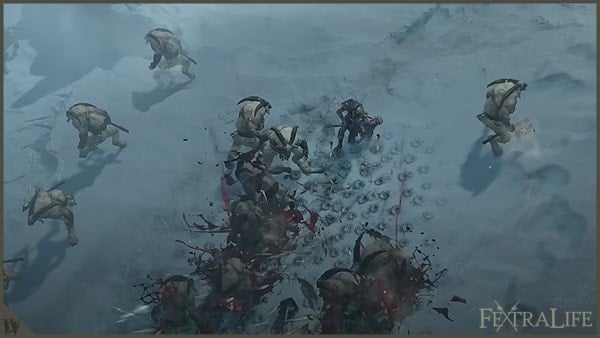
What are Skills in General in Diablo 4
Skills are powerful abilities or attacks that players can assign to their hot bars or ability slots, and each class possesses a unique set of skills that sets them apart from other classes. For example, the Sorceress relies on spells to overcome foes, while the Barbarian delivers crushing blows and unleashes earth-shaking tremors. In this guide, we will explore various types of skills, with a primary focus on Basic, Core, Ultimate, Actives, Passives, and Defensive skills to provide a solid foundation. Additionally, each class has two distinct sets of skills, which will be detailed on the Classes Page.

Manage Resources Points in Diablo 4
In previous installments of Diablo (1 and 2), players replenished their mana or "resource" points by consuming Mana Potions. However, in Diablo 4, this dynamic has undergone a significant change. Instead, players now rely on engaging in basic attacks to regenerate their resources. This shift in mechanics holds particular significance for melee-oriented builds and classes like the Barbarian and Druid. Conversely, classes such as the Necromancer, Rogue, and Sorceress naturally regenerate their resource points over time. These resource points play a vital role in casting skills, as is common in many other games, making this design a widely utilized feature or mechanic.
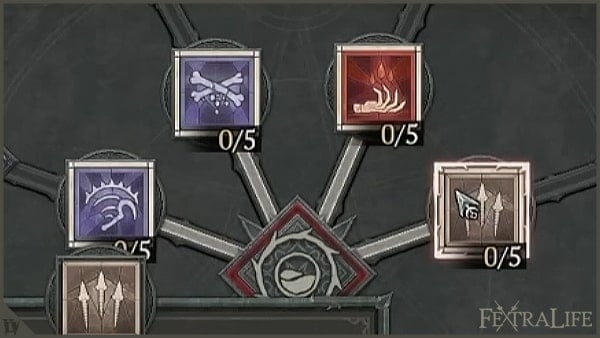
Player's HP or Health Points
Just like in most games, health points (HP) play a fundamental role in character progression. If a character's HP reaches zero, they cannot continue. In Diablo 4, this mechanic is also present. You can see your current health pool represented by the Red Orb on the left-hand side of your menu. When this health pool is depleted after taking a significant amount of damage, your character will die. As your character levels up, their stats, including HP, will increase.

Player's MP or Resource Points
In Diablo 4, resource points are primarily used for casting spells or using active skills. These points are essential for utilizing skills effectively. You can observe the Orb on the right-hand side of your menu, which represents your current resource points. When these points reach zero or get depleted, players will be unable to use skills or spells until they are replenished. While different classes may have distinct names for these points, their function remains the same. Managing these resources is crucial for maintaining a balance between offensive and defensive actions.

How To Get Health Potions in Diablo 4
This kind of item typically restores your health points. Your character can hold up to five potions, as indicated by the 5/5 count near the health orb. How can you obtain more potions? By defeating enemies, you can replenish your potions by collecting the red-colored health orbs they drop. Alternatively, you can search for Healing Wells, similar to the one shown in the image below, to replenish your potion count. It's important to remember that you cannot pick up these orbs if your potion count is already full.
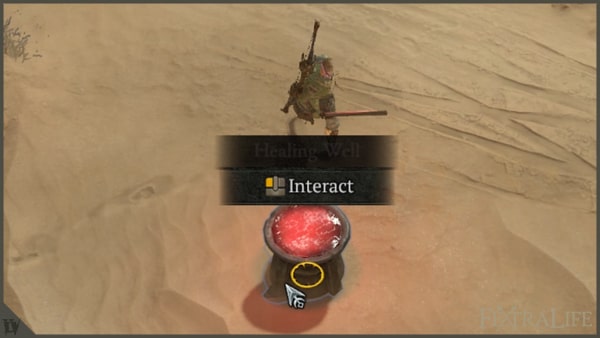
What is Evade in Diablo 4
The Evade mechanic in the game allows players to dodge enemy attacks by quickly moving out of harm's way. However, there is a cooldown period before it can be used again. This ability is especially helpful for avoiding area-of-effect (AoE) attacks from enemies. It is not only useful during combat but also proves beneficial when exploring the game world. Players can further improve their Evade skill by finding items with special modifiers that provide extra customization options. For example, one modifier may grant a temporary 40% increase in movement speed after performing an Evade.
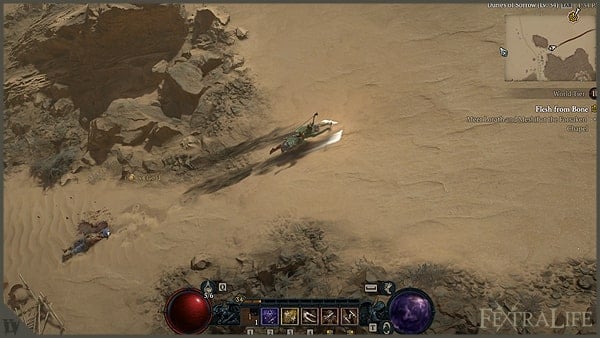
What are Active Skills in Diablo 4
Regular attacks and basic abilities in the game do not consume your special gauges, like Fury or Mana, and are suitable for dealing with easier enemies. As mentioned earlier, basic attacks are also used to replenish your resource gauge, especially when playing as a Druid or Barbarian Class. When you begin the game, you already have access to basic skills that you can use. However, it's important to know that you can unlock additional skills by advancing through your Character's Skill Tree. Unlocking these powerful skills will enhance your overall character build.

What are Passive Skills in Diablo 4
Passive Skills, as their name suggests, are constantly active and don't require activation by the player in most cases. As you engage in combat or explore the game world, you will automatically benefit from the effects and enhancements provided by these Passive Skills. Both Passive and Active skills are designed to work together, assisting players in overcoming their enemies. In Diablo 4, Passive Skills are also referred to as Talents.
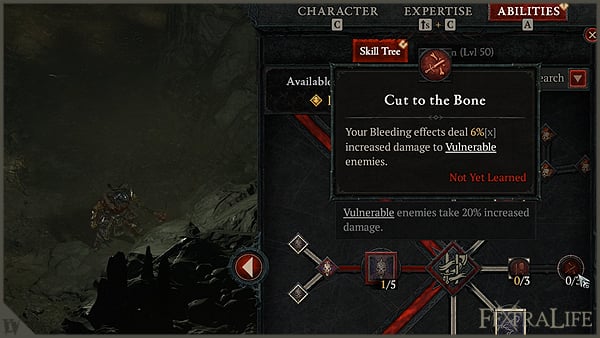
What are Basic Skills in Diablo 4
Normal attacks and basic abilities usually don't consume your special resources like Fury or Mana, making them suitable for dealing with weaker enemies. As mentioned earlier, basic attacks also help replenish your resource gauge, which is particularly useful for Druids and Barbarians. When you begin the game, you'll already have access to these basic skills, allowing you to use them right away.
What are Core Skills in Diablo 4
Core Skills are the primary set of unique abilities for each class, directly tied to their special gauge. These skills pack a stronger punch than basic attacks and come with their own unique characteristics and attributes. For example, the Barbarian has the powerful Whirlwind ability, while the Rogue can unleash Rapid Fire. In simple terms, these are your class-specific skills that you'll acquire and use from the start.
Examples of Basic Skills
| Skill Name | Skill Description |
|---|---|
Arc lash |
Unleash arcing lightning that deals X [42%] damage to enemies in front of you. Every 10 times Arc Lash swipes, it Stuns all enemies hit for 2 seconds. Enchantment Effect When you use a Cooldown, enemies around you are Stunned for 0.5 seconds. |
Blade Shift |
Quickly stab your victim for X [15%] damage and shift, allowing you to move freely through enemies for 3 seconds. |
Maul |
Shapeshift into a werebear and maul Enemies in front of you, dealing X [20%] damage. |
Examples of Core Skills
| Skill Name | Skill Description |
|---|---|
Barrage |
Unleash a barrage of 5 arrows that expands outwards, each dealing X [21%] damage. Each arrow has a 20% chance to ricochet off an enemy up to 1 time. Ricochets deal 40% of the arrow‘s Base damage.
|
| Rend |
Cleave enemies in front of you, dealing X [12%] damage and inflicting X [96%] Bleeding damage over 5 seconds |
Landslide |
Crush enemies between 2 pillars of earth, dealing up to X [75%] damage. |
What are the Ultimate Skills in Diablo 4
Ultimate Skills are incredibly powerful and rare abilities in the game. Each class has a selection of three options, but players can only equip one at a time. The first ultimate skill becomes available when the character reaches level 25. These skills are formidable, but they also come with long cooldown periods, meaning you can't use them frequently. To make the most of these abilities, players need to carefully plan their character build and be mindful of when to unleash their ultimate skill.
What are Defensive Skills in Diablo 4
Defensive skills are designed to shield players from various harmful effects in the game, including status ailments and general damage. These skills offer damage mitigation, crowd control, resistance against area-of-effect attacks, protection against negative status effects, and sometimes even offensive buffs and increased damage. Each class offers its own unique set of defensive skills, and each skill functions differently, fitting into the specific skill rotation of that class.
Examples of Ultimate Skills
| Skill Name | Skill Description |
|---|---|
Grizzly Rage |
Shapeshift into Dire Werebear for 12 seconds gaining 20% [x] bonus damage and 20% damage reduction. Damage bonus is increased by 3% each second while in this form. Kills extend the duration by 1 second up to 10 additional seconds. |
Iron Maelstrom |
Activate three times to attach chains to each of your weapons and perform an attack:
|
Rain of Arrows |
Arrows rain down over a large area 2 times, each wave dealing X [100%] damage. |
Examples of Defensive Skills
| Skill Name | Skill Description |
|---|---|
Ground Stomp |
Smash the ground, dealing X [10%] damage and Stunning surrounding enemies for 3 seconds. |
Debilitating Roar |
Shapeshift into a Werebear and bellow a mighty roar, reducing Nearby enemies damage dealt by 70% for 4 seconds. |
Dash |
Dash forward and slash enemies for X [36%] damage. |
Classes Overview
Diablo 4 offers a varied roster of five classes: Barbarian, Rogue, Sorcerer, Druid, and Necromancer. Each class encompasses a total of six unique skill sets, which include a gauge-generating set, a mana-consuming set, an ultimate set, a defensive set, and two additional skill sets exclusive to that particular class. This wide range of skill sets provides players with significant flexibility, allowing them to customize their character builds to suit their individual preferences.
Enemy Types Overview
In this section, we will explore the various types of enemies you'll encounter in Diablo 4. As a new player, it's essential to understand the adversaries you'll face once you've grasped the basics of combat. Each creature found in different Locations and Dungeons possesses its own unique traits and attack patterns, setting them apart from one another. These enemies present an ongoing threat and provide a dynamic challenge, while also yielding valuable items crucial for your progression in the game. Familiarizing yourself with the different enemy types grants you an advantage, allowing you to prepare and adjust your strategy accordingly. The enemy roster includes regular minions known as Archetypes, Elites, Super Unique Monsters, Champion enemies, and Bosses. Additionally, this guide will delve into the classifications of Bosses, providing further insights into these formidable foes.
Archetypes or Regular Minions
In each enemy family, you'll find specific archetypes with their own set of unique skills. These archetypes frequently appear in mixed groups, combining different types from within the same family. Each archetype serves a distinct role in combat. For instance, Swarmers assault in large numbers, making area-of-effect attacks highly satisfying. Bruisers, on the other hand, are formidable, boasting high health values that make damage over time abilities particularly effective against them. Melee combat units act as shields, safeguarding their ranged counterparts by intercepting incoming projectiles. Furthermore, certain families may feature a Shaman or a specialized unit with the ability to cast magic.

Elites
Elites are exceptional foes that bear a resemblance to regular enemies but wield additional abilities known as Affixes, granting them a significant power boost. The assortment of available Affixes is vast, offering a diverse array of enhancements. Elites can be easily recognized by their distinct coloration, setting them apart from their ordinary counterparts. It is common to encounter these Elites alongside accompanying minions, who also benefit from the same Affixes, further augmenting their strength.
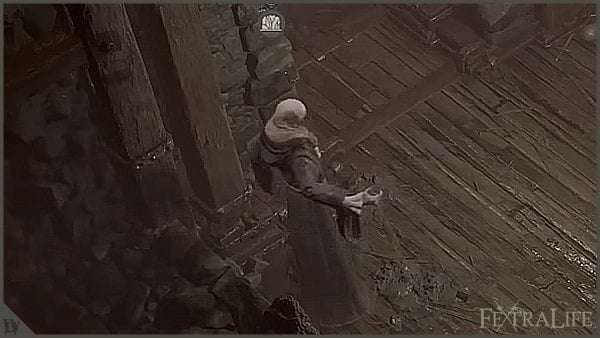
Champions
Champions share resemblances with Elites, as they too possess Affixes that amplify their combat abilities and bestow minor buffs upon their accompanying minions. However, Champions are exclusively encountered in Nightmare Difficulty (World Tier 3) or higher, introducing an extra level of challenge and intensity to the gameplay.

Super Unique Monsters
Super Unique Monsters are exceptional non-boss adversaries that exceed the power of regular minions and monsters. What sets them apart and makes them truly exceptional are their distinct names, appearances, and abilities. These formidable foes can be encountered in special locations, quests, or events throughout the game. Triumphing over Super Unique Monsters grants players highly valuable and rare loot, along with a significant amount of experience points. Once these monsters are defeated, they do not reappear, guaranteeing a unique and unforgettable encounter with their formidable presence.
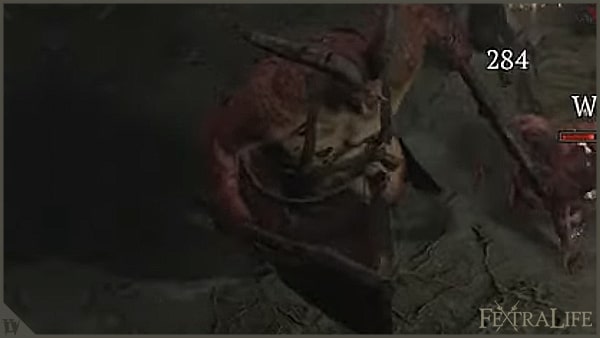
Bosses & Their Classifications in Diablo 4
Bosses, as formidable adversaries, commonly await players at the culmination of Dungeons, Quests, and Strongholds, assuming the role of the primary guardians of the infernal realm. These mighty foes reign supreme with their unmatched power, showcasing distinctive abilities and formidable health reserves. Overcoming specific Bosses becomes crucial for advancing the game's storyline, as their defeat acts as a catalyst for unlocking new Locations and unraveling further adventures. Unlike regular Enemies, Bosses possess significantly higher health pools and display unique movements that distinguish them from their counterparts. Progressing through the game's narrative and accessing additional areas and Quests often necessitates the vanquishing of particular Bosses.
To gain an upper hand in battle, players can strive to stagger Bosses by depleting the yellow bar beneath their health. This can be accomplished by utilizing staggering mechanics such as stunning or freezing the Boss. Once the bar is completely filled, the Boss becomes staggered, providing players with a window of opportunity to unleash their attacks freely. Moreover, many Bosses incorporate scripted mechanics that result in the loss of limbs or abilities when staggered, thereby reducing the overall difficulty of the encounter. There are four types of Bosses: Main Campaign Bosses, World Bosses, Dungeon Bosses, and Stronghold Bosses, and we will offer a basic overview of each of these categories.
Main Campaign Bosses
Main Campaign Bosses in Diablo 4 play a crucial role as adversaries that players must overcome in order to progress the game's storyline, unlocking access to Endgame content. These Bosses are intricately woven into the game's lore and narrative. Typically encountered at the conclusion of an Act, although with a few exceptions, defeating them often grants players vital items or elements necessary for advancing in the Main Questline.
These Bosses are introduced through cutscenes or serve as the culmination of a story arc. The boss fights are designed to be relatively straightforward, allowing players of all levels to enjoy the continuation of the game's narrative. Due to their significance in the storyline, it is not possible to encounter these Bosses multiple times with the same character. Like other Bosses, they possess significantly higher health than regular enemies, and their health bars are divided into distinct phases indicated by red arrows. This often requires players to progress through multiple phases during the battle in order to emerge victorious.
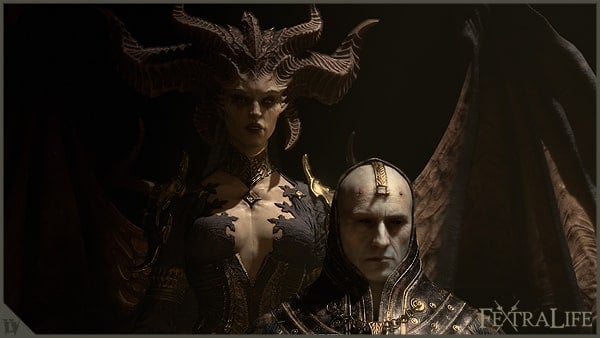
World Bosses
In Diablo 4, World Bosses are formidable adversaries that players have the option to confront in specific areas of the game. These Bosses present a unique opportunity to acquire rare loot and receive special rewards. While not essential for completing the game, World Bosses introduce an exciting and challenging mechanic that players from all over the world can engage in. These Bosses spawn at predetermined times and have set levels. Players receive a warning on their screens thirty minutes before the Boss's arrival, providing details about the spawn location. Defeating a World Boss grants a unique reward that can only be obtained once per week from that specific Boss, in addition to other Legendary loot.
These boss fights are designed to be highly challenging and are nearly impossible to conquer alone. To tackle these formidable challenges, up to twelve players can join the fight, akin to raid battles in MMORPG games. The game provides a recommended level for players to take on the encounter. Although World Bosses may respawn at certain intervals, the unique loot associated with each Boss can only be obtained once. These Bosses possess even greater health than other Bosses, and their health bars are divided into multiple phases, reflecting the escalating difficulty of the battle.
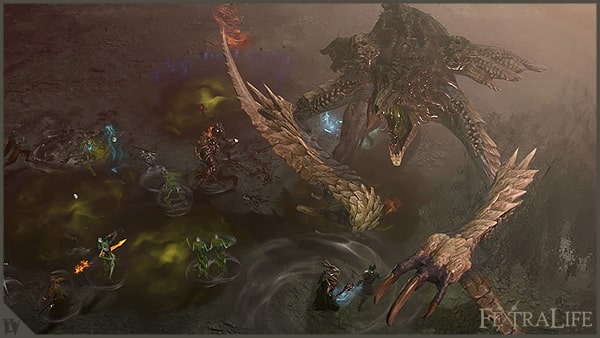
Stronghold Bosses
In Diablo 4, Stronghold Bosses are formidable enemies that players must defeat in order to liberate Strongholds, which are locations infested with demons. By successfully conquering Strongholds, players have the ability to transform them into safe havens with side quests, vendors, and shortcuts, or into challenging dungeons with additional areas to explore and conquer. Each Stronghold features its own unique Boss, which players must confront after completing all the necessary objectives. These objectives vary in terms of their storyline, theme, and nature, and they directly influence the type and characteristics of the Boss encountered.
The difficulty of these boss fights can vary, and emerging victorious often reward players with rare and valuable items. The quality of the rewards is determined by the difficulty level that matches the player's own level when facing the Stronghold. Once a Stronghold has been liberated, it is not possible to engage in battle with its Boss again. Similar to other Bosses in the game, Stronghold Bosses possess greater health than regular enemies, and their health bars are divided into distinct phases denoted by red arrows. In many cases, Stronghold Bosses also feature multiple phases within the battle, adhering to the general design principles of Boss encounters.

Dungeon Bosses
In Diablo 4, Dungeon Bosses are formidable adversaries that players must overcome at the conclusion of Dungeons. While not all Dungeons feature a boss, they often have diverse objectives that vary in terms of their storyline, theme, and nature. These objectives also determine the type and characteristics of the boss, if one is present. One interesting aspect is that the layout, objectives, and significant points within Dungeons change with each playthrough. This means that the path to reaching the boss won't be the same every time you engage in the Dungeon.
The difficulty of these boss fights can vary, and emerging victorious usually rewards players with rare and valuable items. The quality of the rewards is influenced by the difficulty level that matches the player's own level when undertaking the Dungeon. Since Dungeons are randomized and persist as Dungeons even after being cleared, players have the opportunity to defeat these bosses as many times as they desire. Similar to other bosses in the game, Dungeon Bosses possess greater health than regular enemies, and their health bars are divided into distinct phases.
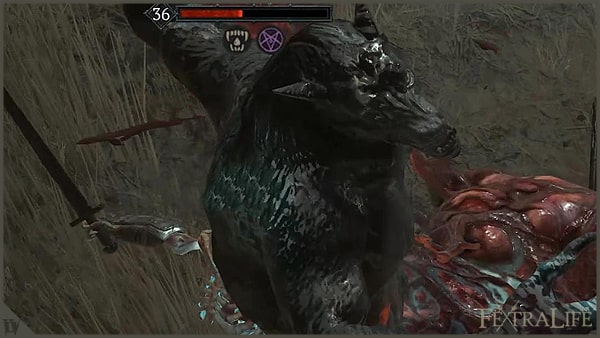
Basic Exploration Guide
Exploration in Diablo 4 is immense and immersive as it is an open-world game. Generally completing objectives or reaching the endgame is nonlinear. Players will have the freedom to explore the said world and complete various objectives. Whether when completing Main Quests or Side Quests, you will be tasked to clear Strongholds, and Dungeons or even visit Towns and Cities. Thus it is a must to determine which type of structure or location you are trying to clear. Each type will be briefly tackled, like what each structure does or expound on its basic layouts.
In light of this, you are welcome to visit our Diablo IV Interactive Map to pinpoint every location and other important aspects of the game such as Merchants, Altars of Lilith, Strongholds, Dungeons, and Waypoints. This will greatly speed up your progress. Click the banner here and you are good to go.
What are Strongholds in Diablo 4?
In Diablo 4, Strongholds represent heavily fortified locations that have fallen under the control of malevolent demons, transforming into strongholds of unfettered evil. Similar to dungeons, Strongholds feature their own distinct objectives, sets of enemies, and formidable bosses to overcome, accompanied by rewarding treasures to claim. However, unlike dungeons, Strongholds are situated within the expansive overworld, and liberating them from demonic influence leaves a lasting impact on the game world, transforming them into secure sanctuaries for both players and non-player characters (NPCs) alike. The effects of conquering a stronghold vary depending on the specific location. In some instances, they evolve into player-friendly settlements, serving as vibrant hubs for engaging in side quests and providing essential services through vendors and other amenities.
In other cases, stronghold conquests unlock convenient shortcuts and pathways that span across the surrounding regions. Strongholds can be conquered either solo or as part of a party, and each stronghold exists as its own distinct instance. While inside a stronghold, players cannot visually perceive other players unless they are part of the same party. However, once a stronghold is successfully conquered, players will be able to see and interact with other victorious players who have also accomplished the feat. Each completed stronghold bestows players with Renown specific to the corresponding region, further enhancing their achievements and reputation.
What Are Towns and Safe Havens in Diablo 4?
Related to Strongholds and as the name implies, like in other games, these are your hubs where you can trade currencies with vendors for general upgrades. Towns or safe havens tied to Strongholds will be unlocked after you liberate or clear the Strongholds that govern the area. It is worth noting that there are small settlements as well scattered throughout the map and server as a resting places for travelers.
What Are Waypoints in Diablo 4?
By leveraging these unique markers, you can swiftly navigate through the terrain, facilitating expedient travel to your intended destinations. Moreover, being well-acquainted with the essential waypoints can significantly hasten your arrival at pivotal events, such as engaging in intense World Boss battles. In the Fractured Peaks region, you will encounter a total of 7 strategically placed waypoints, eagerly awaiting your discovery.
What Are Dungeons In Diablo 4?
Players will step into a private space where other players are invisible unless they are part of your party. These dungeons are created randomly, offering a mix of indoor and outdoor environments that seamlessly combine different visual styles. Not only do the landscapes change, but the enemies you encounter also vary, keeping the experience fresh and exciting, all without any loading screens. Experience Surprises in Diablo 4 Dungeons. They are filled with unexpected events that add spontaneity and excitement to your journey. Additionally, these dungeons feature special objectives that are carefully designed to create a cohesive experience. These objectives increase the danger you face, but they also bring greater rewards, making every moment in the dungeon thrilling and worthwhile.
What are Cellars in Diablo 4?
In comparison to expansive dungeons, cellars in Diablo 4 offer a more compact experience, usually centered around a single objective within a single room. These cellars can be discovered within the open world, with most zones and sub-regions featuring at least one of them. Each cellar is guaranteed to house at least one formidable elite enemy, providing a satisfying challenge for players. Upon successful completion, players are rewarded with a chest containing valuable loot. Some cellars may also incorporate small puzzles to solve, adding an additional layer of engagement. Furthermore, these cellars can occasionally host events and shrines, enhancing the diversity of encounters. To assist your exploration, this page provides a comprehensive list of all the cellars available in Diablo 4, including their respective regions, sub-zones, and locations on the Interactive Map.
What is a Nightmare Dungeon in Diablo 4?
Nightmare Dungeons in Diablo 4 offers a heightened level of difficulty, specifically tailored for seasoned players seeking an intensified challenge. These advanced dungeons are meticulously crafted to provide a formidable experience, catering to high-level players who have successfully conquered the game's main campaign. Designed as a test of skill and expertise, nightmare dungeons serve as an enticing option for experienced adventurers in search of more demanding content.
The Effectiveness of Mounts in Diablo 4
Now that you already know how to get a Mount as we listed in our general tips and tricks section, riding your Mount is one of the basic ways to traverse these lands. By using mounts, you can cover more ground in a short period. Not only it helps you reach your destination faster, but it is aesthetically pleasing to your character. Note that there are several mounts to collect in the game, hence you can enjoy more added gameplay there.
Use Evade Frequently
Evade is not only effective in combat but also in exploration. If you don't plan on using mounts for reasons, you can spam Evade to quickly transit from point A to B. This is a neat feature and be sure to abuse that.
Basic Level Traversal
In Diablo 4, observe carefully for upper sections when trying to clear a dungeon or a certain level. Players can access the said parts by climbing through ladders. This feature was introduced recently to add more depth to Diablo 4 gameplay. Compare to the previous installments.


